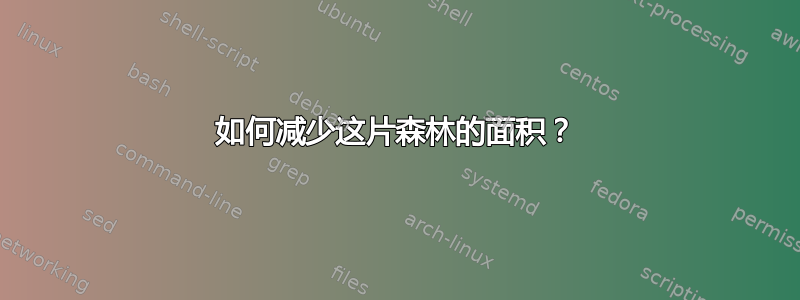
\documentclass[xcolor=table]{beamer}
\usepackage[american,francais]{babel}
\usepackage{listings}
\usepackage{microtype}
\usepackage{textcomp}
\usepackage[T1]{fontenc}
\usepackage[utf8]{inputenc}
\usepackage{lmodern}
\usepackage[final]{pdfpages}
\usepackage{smartdiagram}
\usepackage{tikz}
\usetikzlibrary{arrows.meta}
\usetikzlibrary{shadows.blur}
\usetikzlibrary{shapes.symbols}
\usetikzlibrary{shapes,arrows}
\usetikzlibrary{positioning}
\usepackage{relsize}
\usepackage{mathtools,amsmath}
\usepackage{graphics,bm}
\usepackage{pifont}
\usepackage{color}
\usepackage{calligra}
\usepackage{verbatim}
\usepackage{amsfonts,amsmath,amssymb}
\usepackage[T1]{fontenc}
\usepackage{graphicx}
\usepackage{forest}
\usetikzlibrary{arrows.meta, shapes.geometric, calc, shadows}
\colorlet{mygreen}{green!75!black}
\colorlet{col1in}{red!30}
\colorlet{col1out}{red!40}
\colorlet{col2in}{mygreen!40}
\colorlet{col2out}{mygreen!50}
\colorlet{col3in}{blue!30}
\colorlet{col3out}{blue!40}
\colorlet{col4in}{mygreen!20}
\colorlet{col4out}{mygreen!30}
\colorlet{col5in}{blue!10}
\colorlet{col5out}{blue!20}
\colorlet{col6in}{blue!20}
\colorlet{col6out}{blue!30}
\colorlet{col7out}{orange}
\colorlet{col7in}{orange!50}
\colorlet{col8out}{orange!40}
\colorlet{col8in}{orange!20}
\colorlet{linecol}{blue!60}
\begin{document}
\begin{frame}%[fragile]
\frametitle{Commande}
\pgfkeys{/forest,
rect/.append style={rectangle, rounded corners=2pt, inner color=col6in, outer color=col6out},
ellip/.append style={ellipse, inner color=col5in, outer color=col5out},
orect/.append style={rect, font=\sffamily\bfseries\normalsize, text width=150pt, text centered, minimum height=5pt, outer color=col7out, inner color=col7in},
oellip/.append style={ellip, inner color=col8in, outer color=col8out, font=\sffamily\bfseries\large, text centered},
}
\begin{forest}
for tree={
font=\sffamily\bfseries,
line width=1pt,
draw=linecol,
ellip,
align=center,
child anchor=north,
parent anchor=south,
drop shadow,
l sep+=12.5pt,
edge path={
\noexpand\path[color=linecol, rounded corners=5pt, >={Stealth[length=10pt]}, line width=1pt, ->, \forestoption{edge}]
(!u.parent anchor) -- +(0,-5pt) -|
(.child anchor)\forestoption{edge label};
},
where level={3}{tier=tier3}{},
where level={0}{l sep-=1.5pt}{},
where level={1}{
if n={1}{
edge path={
\noexpand\path[color=linecol, rounded corners=5pt, >={Stealth[length=10pt]}, line width=1pt, ->, \forestoption{edge}]
(!u.west) -| (.child anchor)\forestoption{edge label};
},
}{
edge path={
\noexpand\path[color=linecol, rounded corners=5pt, >={Stealth[length=10pt]}, line width=1pt, ->, \forestoption{edge}]
(!u.east) -| (.child anchor)\forestoption{edge label};
},
}
}{},
}
[Compressed Sensing\\Theory, inner color=col1in, outer color=col1out
[Projection Matrix\\Theory, inner color=col2in, outer color=col2out
[Optimise Projection\\Matrix, inner color=col4in, outer color=col4out]
[Reduce Number of\\Measurements, inner color=col4in, outer color=col4out]
]
[Reconstruction\\Algorithms, inner color=col3in, outer color=col3out
[Convex Relaxation
[Sparse Signal\\Estimate, rect, name=sse1
]
]
[Greedy Pursuits
[Sparse Signal\\Estimate, rect, name=sse2
]
]
[, phantom, calign with current
[A\\B, phantom
[Our Work, orect, name=us
[{Improved Sparse Signal Estimate!}, oellip
]
]
]
]
[Non-Convex\\Minimisation Methods
[Sparse Signal\\Estimate, rect, name=sse3
]
]
[Combinatorial\\Algorithms
[Sparse Signal\\Estimate, rect, name=sse4
]
]
]
]
\begin{scope}[color=linecol, rounded corners=5pt, >={Stealth[length=10pt]}, line width=1pt, ->]
\draw (sse2.south) -- (us.north -| sse2.south);
\draw (sse3.south) -- (us.north -| sse3.south);
\coordinate (c1) at ($(sse1.south)!2/5!(sse2.south)$);
\coordinate (c2) at ($(sse3.south)!2/5!(sse4.south)$);
\draw (sse1.south) -- +(0,-10pt) -| (us.north -| c1);
\draw (sse4.south) -- +(0,-10pt) -| (us.north -| c2);
\end{scope}
\end{forest}
\end{frame}
\end{document}
答案1
我个人不会选择任何如此花哨的东西,但如果你喜欢闪亮的东西,你可以使用这样的东西:
\documentclass[beamer]{standalone}
\usepackage[edges]{forest}
\usetikzlibrary{arrows.meta, shadows}
\colorlet{mygreen}{green!75!black}
\colorlet{col1in}{red!30}
\colorlet{col1out}{red!40}
\colorlet{col2in}{mygreen!40}
\colorlet{col2out}{mygreen!50}
\colorlet{col3in}{blue!30}
\colorlet{col3out}{blue!40}
\colorlet{col4in}{mygreen!20}
\colorlet{col4out}{mygreen!30}
\colorlet{col5in}{blue!10}
\colorlet{col5out}{blue!20}
\colorlet{col6in}{blue!20}
\colorlet{col6out}{blue!30}
\colorlet{col7out}{orange}
\colorlet{col7in}{orange!50}
\colorlet{col8out}{orange!40}
\colorlet{col8in}{orange!20}
\colorlet{linecol}{blue!60}
% \newenvironment{frame}{}{}
\standaloneenv{frame}
\begin{document}
\begin{frame}[fragile]
\frametitle{Commande}
\forestset{
rect/.append style={inner color=col6in, outer color=col6out},
ellip/.append style={inner color=col5in, outer color=col5out},
orect/.append style={outer color=col7out, inner color=col7in},
oellip/.append style={inner color=col8in, outer color=col8out, font=\bfseries},}
\begin{forest}
for tree={
line width=1pt,
inner sep=2pt,
font=\small,
draw=linecol,
ellip,
align=center,
drop shadow,
parent anchor=children,
child anchor=parent,
rounded corners,
l sep+=2.5pt,
edge+={color=linecol, -{Stealth}, line width=1pt},
if level={3}{tier=tier3}{},
if level={0}{l sep-=1.5pt}{},
},
forked edges,
[Compressed Sensing Theory, inner color=col1in, outer color=col1out
[, coordinate, edge+={-} [, coordinate, edge+={-} [Projection Matrix Theory, inner color=col2in, outer color=col2out
[Optimise\\Projection\\Matrix, inner color=col4in, outer color=col4out]
[Reduce\\Number of\\Measurements, inner color=col4in, outer color=col4out]
]]]
[Reconstruction Algorithms, inner color=col3in, outer color=col3out
[Convex\\Relaxation ]
[Greedy\\Pursuits]
[A\\B\\C, phantom, calign with current [Sparse Signal\\Estimate, rect, delay={for nodewalk/.process={OOw2 {name}{edge}{ {fake=u,siblings}{tikz+={\path [#2] (.parent anchor) -- (nmm.parent anchor |- .parent anchor)-- +(\forestoption{fork sep},0pt) |- (#1.child anchor); } } } }}
[Our Work, orect,
[{Improved Sparse Signal Estimate!}, oellip
]]
]
]
[Non-Convex\\Minimisation\\Methods, name=nmm]
[Combinatorial\\Algorithms ]
]
]
\end{forest}
\end{frame}
\end{document}
省略号必须去掉。 也一样\large。路径也一样rounded corners。如果你能缩写一些文本,你就能让它看起来更整洁,但我不知道这是否是一个选择。
答案2
另一个起点可以是以下重新设计您的forest图像:
代码不太优雅,因为它在联邦法规答案但结果图像与原始图像更相似。它结合forest了tikz:
\documentclass[xcolor=table]{beamer}
\usepackage[american,francais]{babel}
\usepackage{listings}
\usepackage{microtype}
\usepackage{textcomp}
\usepackage[T1]{fontenc}
\usepackage[utf8]{inputenc}
\usepackage{lmodern}
\usepackage[final]{pdfpages}
\usepackage{smartdiagram}
%\usepackage{tikz} % <-- loaded by forest
\usepackage{relsize}
\usepackage{mathtools,
% amsmath % <-- loaded by mathtools
}
\usepackage{%graphics, % <-- loaded by graphicx,
bm}
\usepackage{pifont}
%\usepackage{color} % <-- beamer load xcolor, which is enhanced color
\usepackage{calligra}
\usepackage{verbatim}
\usepackage{% amsfonts, % <-- loaded by amssymb
% amsmath, % <-- loaded by mathtools
amssymb}
%\usepackage[T1]{fontenc}
%\usepackage{graphicx} % <-- loaded by beamer
\usepackage{forest}
\usetikzlibrary{arrows.meta, % <-- moved after forest
calc,
positioning,
shadows, shadows.blur,
shapes.symbols, shapes.geometric, }
%\usetikzlibrary{arrows.meta, calc, positioning, shapes.geometric, calc, shadows}
\colorlet{mygreen}{green!75!black}
\colorlet{col1in}{red!30}
\colorlet{col1out}{red!40}
\colorlet{col2in}{mygreen!40}
\colorlet{col2out}{mygreen!50}
\colorlet{col3in}{blue!30}
\colorlet{col3out}{blue!40}
\colorlet{col4in}{mygreen!20}
\colorlet{col4out}{mygreen!30}
\colorlet{col5in}{blue!10}
\colorlet{col5out}{blue!20}
\colorlet{col6in}{blue!20}
\colorlet{col6out}{blue!30}
\colorlet{col7out}{orange}
\colorlet{col7in}{orange!50}
\colorlet{col8out}{orange!40}
\colorlet{col8in}{orange!20}
\colorlet{linecol}{blue!60}
\begin{document}
\begin{frame}[fragile]
\frametitle{Commande}
\centering
\tikzset{
node distance = 9pt and 0pt,
fs/.style = {font=\sffamily\bfseries\small},
rect/.style args = {#1/#2}{rectangle, draw=linecol, line width=1pt, rounded corners=2pt,
inner color=#1, outer color=#2},
rect/.default = col6in/col6out,
oellip/.style = {ellipse, draw=linecol, line width=1pt,
inner color=col8in, outer color=col8out,
fs, align=center,
inner xsep=-3pt},
}
\begin{forest}
for tree={
rect,
font=\sffamily\bfseries\scriptsize\linespread{0.8}\selectfont,
align=center,
drop shadow,
child anchor=north,
parent anchor=south,
l sep+=3pt, s sep=3.3pt,
edge = {color=linecol, rounded corners=3pt, -{Stealth[length=5pt]}, line width=1pt},
edge path={ \noexpand\path[\forestoption{edge}]
(!u.parent anchor) -- +(0,-5pt) -| (.child anchor); },
where level={1}{l sep+=3pt,
if n={1}{
edge path={
\noexpand\path[\forestoption{edge}]
(!u.west) -| (.child anchor);},
}{
edge path={\noexpand\path[\forestoption{edge}]
(!u.east) -| (.child anchor);},
}
}{},
where level={3}{tier=tier3,l sep+=3pt}{},
}
[Compressed Sensing Theory, rect=col1in/col1out, fs
[Projection Matrix\\Theory, rect=col2in/col2out
[Optimise\\ Projection\\Matrix, rect=col4in/col4out]
[Reduce\\ Number of\\Measurements, rect=col4in/col4out]
]
[Reconstruction\\Algorithms, %inner color=col3in, outer color=col3out
[Convex\\ Relaxation
[Sparse\\ Signal\\Estimate, name=sse1]
]
[Greedy\\ Pursuits
[Sparse\\ Signal\\Estimate, name=sse2]
]
[Non-Convex\\Minimisation\\ Methods
[Sparse\\ Signal\\Estimate, name=sse3]
]
[Combinatorial\\Algorithms
[Sparse\\ Signal\\Estimate, name=sse4
]
]
]
]
\draw let \p1=($(sse1.west)-(sse4.east)$),
\n1={veclen(\x1,\y1)} in
node[rect=col7in/col7out, fs,
minimum width=\n1, below right=of sse1.south west]
(us) {Our Work};
\node[oellip, below=of us] (isse) {Improved Sparse\\ Signal Estimate!};
\draw[color=linecol, rounded corners=3pt, -{Stealth[length=5pt]}, line width=1pt]
(sse1) edge (us.north -| sse1)
(sse2) edge (us.north -| sse2)
(sse3) edge (us.north -| sse3)
(sse4) edge (us.north -| sse4)
(us) edge (isse);
\end{forest}
\end{frame}
\end{document}




